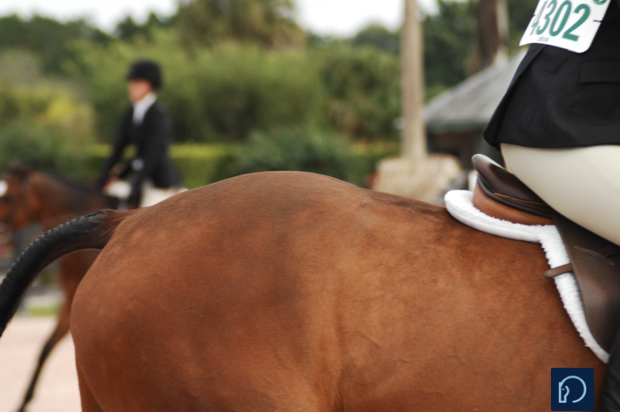I’m lucky to live in an area that hosts rated shows for hunter/jumper enthusiasts.
I used to spend the whole year stashing pennies in my savings account, relishing the opportunity to send in my entry forms.
On show day, I’d turn my rusty pickup and rattling trailer up the show grounds driveway, instantly thunderstruck by the splendor. It was like a childhood dream: fancy horses, perfect footing, colorful fences, and a massive warm-up ring. To complete the fairy tale, my lovely trainer would appear ringside to provide council and soothe my anxiety.
But the exorbitant price tag was always lurking in the background.
Showing one horse for two days meant spending hundreds of dollars—even without purchasing a stall. I would compete in three classes, at $30 each, and pay $60 for coaching per day. That alone comes to $300.
Add in membership fees and the price goes up. It’s around $40 for my United States Equestrian Federation and United States Hunter Jumper Association fees for the show. Miscellaneous office/medic/grounds fees added at least another $70, bringing the bill up to $410.
Factor in fuel for the truck and, ideally, a warm lunch and it goes up further still.
If I had ever spent a full week of showing, the bill would have ranged from $1,000–$1,500. I have a decent corporate job and a family that supports my obsession, but there’s no way I could afford that.
After my first few rated shows, I became discouraged. Although my horse and I performed well, there was no prize money to help offset the show bill. Months later, I found myself looking back and thinking: “If only I hadn’t spent that money, I’d be able to easily afford this emergency vet visit for stitching up Sir Lamealot’s unscheduled neck laceration.”
And don’t even get me started on the rule requiring I pay the vet $60 to microchip my horse (he’s maybe worth $5 total on a good day) and complete SafeSport training.
As much as I would love to prove that my rescue Thoroughbred can hold his own against $20,000 Warmbloods, I decided that rated shows are just not worth it, for me. My money is better suited to building an emergency veterinary fund, having his saddle adjusted, buying quality feeds, and taking lessons.
I still get my weekend showing fix. But these days it’s at non-rated shows where it costs, on average, $75 for a weekend of courses.
And it’s paying off in ways I never imagined.
The small, local shows have given me a sense of empowerment that I never expected. Not only am I in better control of my finances, I’ve also learned to develop my own warm-up plan and show successfully even when my trainer is not available to help.
Last year, I was able to compete in all seven local events (for roughly the same amount as one rated show), and took home a year end champion award for my delightful gelding. I couldn’t be more proud of how far we’ve come!
A ribbon is just a ribbon, after all—regardless of how much I spend to earn it.
Throughout her childhood on the family horse farm, Heather Malcolm found her passion for equine nutrition, behavior, and wellness. After graduating with a degree in Animal Science, she took a job in the companion animal industry. When she’s not riding her horse, she enjoys reading the latest equine research and cuddling up for a nap with her favorite dog.


 March 9, 2020
March 9, 2020 

























